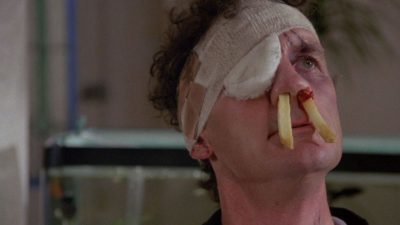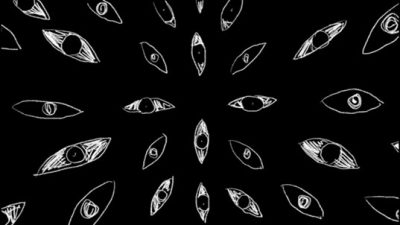For those who loathe the “nailed-down-legs” kind of acting – on Judit Csáki’s book about Cserhalmi
Published last December by Open Books, You Can’t Die Every Day, the volume chronicling the life and career of György Cserhalmi, is not only remarkable in form and presentation but also unique in its structural approach: Judit Csáki chose a method uncharacteristic of her usual style. The reader can only infer the interviewer’s questions from between the lines—this is, after all, a narrative shaped through long conversations—yet within the book, the questions are absent. We are instead drawn into a long monologue by Cserhalmi, and it is through his asides and observations that we glean what may have been asked.
Personally, I found this approach sympathetic—far more engaging than Csáki’s previous volume, which was based on her dialogues with Róbert Alföldi.
On the cover, Cserhalmi gazes into the distance, not at us, with a mischievous smile and expressive eyes, his face marked by the gentle furrows of time. This close-up portrait immediately signals that we are about to read a book that grants intimate access to a man who, from the outside, often seems reserved. The hardcover’s light lilac hue is unexpected, even feminine—yet beautiful and ultimately familiar.
The book spans an entire life and career—far from concluding, it maintains a spirit of playfulness and readiness for new challenges. The enumeration of childhood locations is touching, revealing a deep attachment to the land, and some passages verge on the poetic: imagine, if you will, crossing Lake Balaton in a cart drawn by oxen. Cserhalmi’s closeness to nature and his deep love of landscape surface repeatedly, making his dual residence between Kékkút and Budapest feel inevitable.
Behind his concise, eloquent sentences, one hears his voice. Csáki gracefully steps aside, allowing the artist’s presence to emerge—a man who, by his own account, learned the virtue of stepping back from his mother. The wisdom, stories, and expressions inherited from his ancestors form an integral part of his life. One senses he stands on firm ground, fortified by resources he can draw on in any situation. Music—particularly classical—is a cornerstone of his world; he still listens to vinyl, preferring Mozart above all.
This is an honest book—an account by a man who does not shy away from his missteps and, within the bounds of this format, reveals the personal causes behind certain emotional troughs. He is discreet, never voyeuristic, yet his vivid phrasing conveys meaning with clarity.
He speaks not only of his immediate family—his wife and daughter—but of his friends as well. We learn much about his connection to Zoltán Latinovits. He holds a steadfast theory about how and why the great actor died: he believes Latinovits suffered a fatal visual disturbance due to forgetting to take a psychiatric medication. Before his death, Latinovits had mailed Cserhalmi a letter, asking him to visit, saying he was in a dark place.
The pages bring to life an entire world of theatre and film—rich with stories involving actors, directors, cinematographers. Cserhalmi speaks candidly about his relationship with Miklós Jancsó, even sharing his unflattering opinion on the master’s later films—something he told Jancsó to his face. We can imagine the consequences, but it’s better to read about them in this book. We meet Molnár Gál Péter, János Baksa-Soós, Károly Szász, Gábor Székely, Imre Sinkovits, László Sinkó, and many others—their attitudes, their humour, their tragedies.
Cserhalmi’s life is one of passionate intensity, wide swings, wanderings—yet also loyalty and, when it comes to his work and close family, a deep sense of responsibility. Though occasionally unruly and irreverent offstage, he is meticulous and unyielding in his work. He is well-prepared, thorough, and, importantly, well-read. Be it visual arts or history—anything that might assist the task at hand—he seeks it out and uses it. Thus he possesses a defined worldview, and the reader is fortunate to gain insight into his perspective and philosophy of life.
Movement and sport have always been a part of him since childhood; on screen, his unique physicality is one of his trademarks. He has no tolerance for “nailed-down-legs” acting, a stance he repeats throughout the book.
He speaks with passion and dedication about filmmaking as well. With around 200 films behind him, he knows the craft intimately and holds cinematographers in high regard. His stories about János Kende speak volumes. And with all due respect, I must correct one detail: the lead in Gázolás, Viktor Gertler’s 1955 film, is not István Bujtor, as Cserhalmi claims, but Iván Darvas. (Though that correction really should have been caught by the editor – Ed.)
He shares his experiences in America and discusses how he felt when he learned of Gábor Bódy’s past as a collaborator with the III/III state security services.
As I finished reading, I wondered: is there any aspect of life that Cserhalmi hasn’t addressed? From this point of view, the book is complete. By the final sentences, one feels they have come to know him, and would gladly sit down with him to continue the conversation.
Judit Csáki’s book is not just an extended, in-depth interview with the Nation’s Actor, recipient of the Kossuth and Béla Balázs Prizes, member of the Hungarian Academy of Arts—it is also undeniably a document of theatre and film history.

























Comments